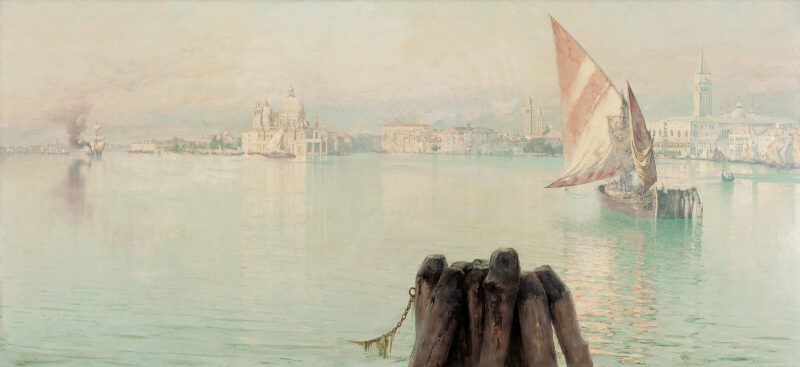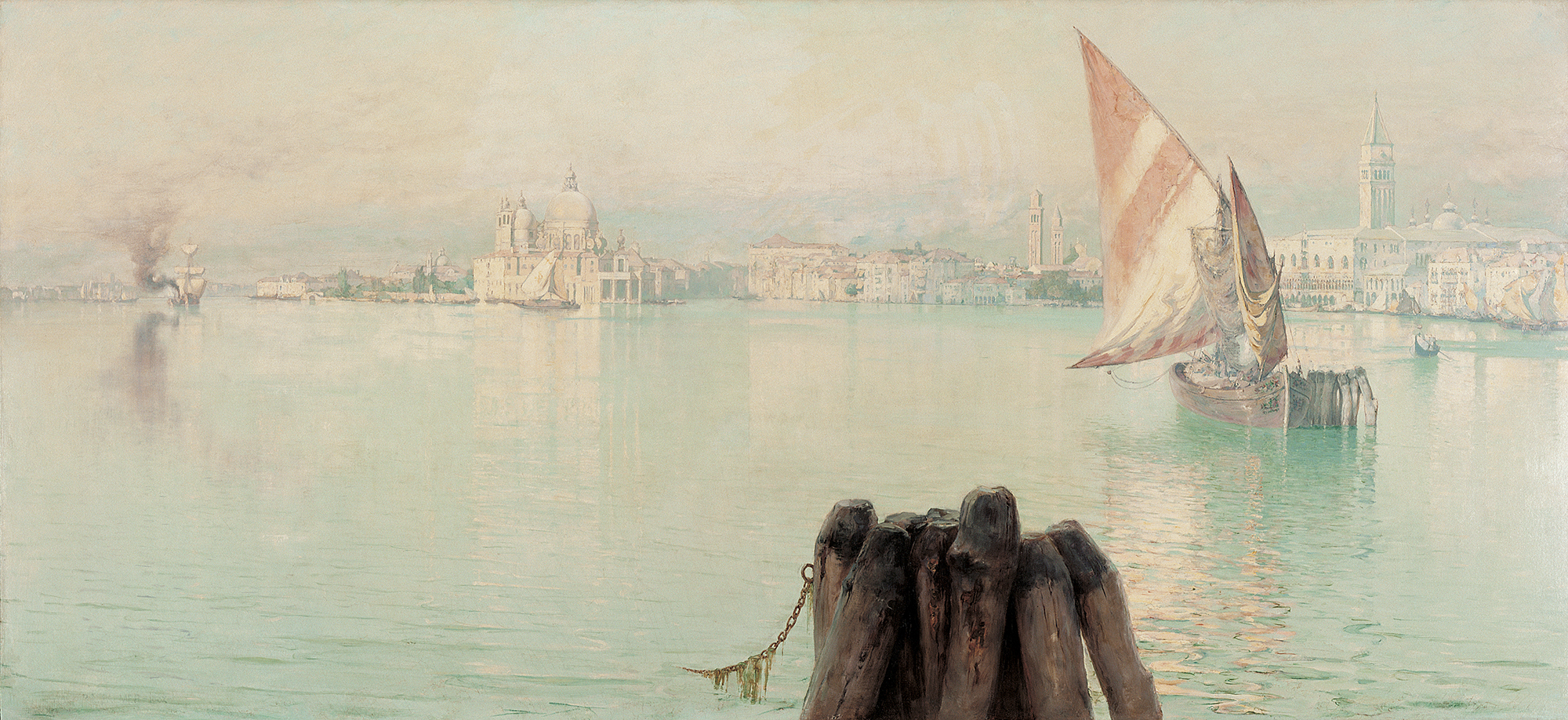
Grand Canal, Venice
Palmer, Walter Launt
1882
Artwork Information
-
Title:
Grand Canal, Venice
-
Artist:
Palmer, Walter Launt
-
Artist Bio:
American, 1854–1932
-
Date:
1882
-
Medium:
Oil on canvas
-
Dimensions:
36 1/8 x 78 inches
-
Credit Line:
Wichita Art Museum, Museum purchase, Mid-Kansas Savings and Loan Association in honor of Mr. and Mrs. Kenneth Brasted, Sr.
-
Object Number:
1978.89
-
Display:
Not Currently on Display
About the Artwork
Grand Canal, Venice presents a dreamily atmospheric panorama of one of the Western world’s most fabled coastlines, executed on a theatrical scale appropriate to the Romantic aesthetic and to popular 19th-centruy taste. William Launt Palmer, who was both pupil and later a colleague of Frederick Church’s, maintained a lively studio in New York where he showed his tonalist landscapes and seascapes depicting picturesque European and American sites. Palmer expressed his personal delight in the success of this composition when he featured it two years later in a handsome portrayal of his studio interior.
In this work Palmer made effective use of the dramatic juxtaposition of near and far perspective focus that Western artists had recently learned from Japanese print design. The viewer’s eyes go immediately to the large foreground object, contours cropped by the frame, a sharply focused, dark mass of weathered pilings with a rusted anchor chain attached and surface glistening with water and slimy seaweed. From this rugged, realistic entry into the scene, the viewer’s gaze imaginatively leaps across a vast celadon-tinted sea to a distant, high horizon line of architectural splendor, the medieval towers and Renaissance domes of Venice, rendered in a fairyland pastel palette of pinks and blues.
This image so redolent of luxury, leisure and elevated social class would not be complete without its elegant object-specific, hand-carved and gilded frame embellished with classical motifs of shell, rosettes, oak leaves, string-of-pearls beading, and significant data of title, painter’s monogram, and date rendered in sinuous art-nouveau script. Palmer had the frame made by the distinguished New York firm of T. A. Wilmurt. The complete package of heroic-scaled painting and frame gives perfect expression to the aesthetic yearnings and satisfactions of America’s social elite at the end of the 19th century.
